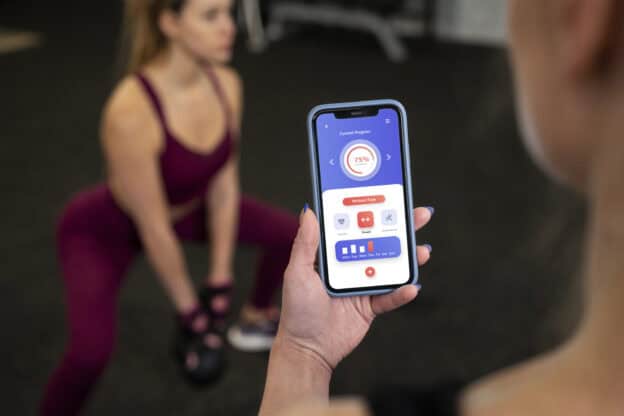Pricing models for gyms involve more than just numbers; they also involve value, perception, and trust. While the incorrect pricing strategy can turn even motivated clients away, the correct one can convert infrequent visitors into devoted members.
Pricing has changed from a basic membership fee to a dynamic strategy that strikes a balance between accessibility, profitability, and member retention as the fitness industry becomes more competitive.
Gyms, whether they are full-service fitness facilities or boutique studios, now understand that how much they charge for their services—and how their pricing models communicate value—is just as crucial as what they provide. A vibrant fitness community or a revolving door of temporary sign-ups can be determined by knowing what influences membership decisions, how to set up fees efficiently, and how to clearly communicate value.
The Psychology Behind Gym Pricing

Price shapes perception; it doesn’t exist in an empty room. The cost of a gym conveys whether it is specialized, high-end, or affordable. Higher costs are frequently linked by members to superior equipment, knowledgeable trainers, or a welcoming community.
However, cost is still a major consideration when making decisions. People want more than just access to machines; they want to feel like they’re getting good value for their money. While unclear contracts or unstated costs cause annoyance, transparency and adaptability foster trust.
Profitable gyms are aware that pricing is psychological as well as mathematical. A model that seems equitable, reachable, and rewarding promotes sustained engagement as well as sign-ups. Retention happens organically when members feel their investment supports their objectives.
Pricing models for gyms involve more than just numbers … how much they charge for their services—and how their gym payment processing infrastructure supports those pricing models—is just as crucial as what they provide.
Flat-Rate Memberships: Simplicity That Sells
For good reason, the gym industry’s mainstay is still the flat-rate model—simplicity sells. Both parties benefit from predictability as members pay a set monthly or yearly fee for unrestricted access. It reduces friction in the sales process and is simple to understand and budget for. But simplicity can have drawbacks.
The gym runs the risk of undervaluing its services if the flat fee is too low. Price-conscious customers will be turned off if it is too high. By adding extras like free classes, guest passes, or member-only workshops, successful gyms that use this model frequently raise the perceived value of their memberships without making the cost more complicated. When combined with a strong brand identity and observable benefits that support consistency, the flat-rate model succeeds.
Tiered Memberships for Diverse Needs
Not every member has the same goals. Others require group instruction or one-on-one training, while others yearn for access around the clock. By providing several levels of access—basic, premium, and elite—each of which caters to particular preferences, tiered pricing addresses these inequalities.
Because of this flexibility, gyms can maximize their potential revenue while appealing to a wider audience. Members value being in charge of their purchases, which promotes loyalty and satisfaction. As people advance in their fitness journeys, tier systems also promote upgrades.
After committing, a novice may begin with basic access before switching to premium options. The tiered approach ensures that members feel their plan fits their lifestyle by reflecting the variety of fitness goals.
Pay-Per-Use: Appealing to Casual Users

Some people hate commitment but love fitness. Pay-per-use models are perfect for them. Customers can pay for each class, day, or session as they visit with this method. It appeals to tourists, infrequent exercisers, and those experimenting because it breaks down the mental barrier of long-term contracts.
This model expands the gym’s customer base and fosters goodwill even though it might produce less consistent revenue. After experiencing the atmosphere and outcomes, many users eventually switch to memberships.
Pay-per-use can function as a marketing funnel—low-risk entry that gradually fosters loyalty—when priced properly. The main selling points are convenience and flexibility, particularly for younger, mobile-focused customers.
Hybrid Models for Modern Fitness
Hybrid pricing has become a significant trend as technology transforms the fitness sector. This model offers members flexibility while improving value perception by fusing virtual offerings with in-person access.
On some days, a member may use the app for at-home workouts while attending classes at the gym three times a week. This balance can be reflected in pricing, which is more economical than premium in-person tiers but marginally more expensive than virtual-only plans. Adaptability is essential to the hybrid approach.
It satisfies modern convenience standards while maintaining members’ connections to the gym’s network. Hybrid models are effective for retention because they allow members to stay involved through digital channels rather than completely discontinuing when life gets hectic.
Founders’ or Early-Bird Pricing
Before officially opening, many gyms use “founders’ pricing” to draw in new members. This temporary, reduced price generates buzz and rewards early commitment. Early adopters frequently become devoted supporters because they feel appreciated for taking a risk.
This model creates a devoted foundation even though it lowers immediate profits. These original members bring friends, offer testimonials, and contribute to the gym’s culture. Fairness must be upheld, though, because even if a customer missed the promotion, they should still see value later. In order to maintain long-term brand integrity, founders’ pricing is most effective when presented as a unique thank-you rather than a constant discount.
The Role of Transparency in Retention

Uncertain terms or hidden costs damage trust more quickly than anything else. Conversely, open pricing improves member relations. Customers feel valued and informed when they are aware of all the costs they are incurring, including initiation fees, cancellation policies, and upgrades.
Additionally, transparency reduces disputes over billing or renewals. Clarity is crucial in today’s digital world, where brand reputation is shaped by online reviews. Members who feel misled are unlikely to come back, but those who feel informed tend to stick around despite difficulties.
Instead of using fine print, the most successful gyms use visual breakdowns and simple language to communicate prices. Transparency eventually turns into a strategic as well as an ethical issue.
Flexible Contracts for Modern Consumers
In the past, the fitness industry was dominated by rigid contracts that locked members into 12- or 24-month commitments. Although this model generated income, it frequently caused annoyance and cancellations.
Customers of today demand flexibility; they want to be able to quickly pause, change, or cancel. Anxiety is decreased and goodwill is increased with flexible contracts that offer month-to-month options or temporary freezes.
Since happy members choose to stay voluntarily, many gyms have found that lenient terms actually increase retention. Being able to leave at any time reduces the likelihood that members will do so, which is a sign of confidence in the quality of the services. The emphasis moves from ensnaring clients to truly gaining their allegiance.
The Subscription Economy Influence
Streaming services and meal kits have reshaped consumer behaviour, creating what’s known as the subscription mind set. People now expect recurring payments to come with personalization, convenience, and continuous value.
Gyms adopting this mindset succeed when they treat memberships as evolving experiences rather than static access. Regular updates—new classes, seasonal challenges, or exclusive content—justify the monthly fee.
The subscription model works when members feel their plan evolves with them. Rather than paying for access, they’re paying for a relationship. By adopting lessons from digital platforms, fitness businesses can transform recurring payments into recurring satisfaction.
Bundling Services to Enhance Value
Bundling creates perceived savings while encouraging deeper engagement. A gym might combine personal training, nutrition consultations, and group classes into one comprehensive package.
Members feel they’re getting a deal while the gym increases overall spend per customer. Bundling also reinforces commitment; once members use multiple services, they become more integrated into the community. The psychological effect is powerful—people stick around for ecosystems, not just products.
When done thoughtfully, bundling turns pricing into storytelling: it shows how different elements of health and fitness fit together in a meaningful way. The result is greater satisfaction, retention, and profitability.
Dynamic Pricing in Fitness

Technology has introduced dynamic pricing to the fitness world—rates that shift based on demand, time, or season. For example, off-peak hours might be discounted to attract more users, while premium classes during peak times cost slightly more.
This approach maximizes facility usage while keeping pricing fair. Members who value flexibility can save, while those who prefer prime slots understand the premium. Although it requires careful implementation, dynamic pricing helps gyms manage capacity efficiently and boost revenue without feeling exploitative.
Transparency and communication remain key—when members understand the reasoning, they view dynamic pricing as fair and beneficial.
Corporate Memberships and Partnerships
Corporate wellness programs have become a major growth avenue for gyms. By partnering with local businesses, gyms can offer discounted memberships to employees, ensuring a steady stream of long-term clients.
Employers gain healthier, more productive teams, while gyms benefit from bulk sign-ups. The key to success lies in pricing flexibility—offering scalable discounts based on company size or participation rates.
Corporate programs also open doors to wellness workshops, team challenges, and brand exposure. In a competitive landscape, these partnerships diversify revenue and deepen community roots. It’s not just about filling memberships—it’s about embedding fitness into workplace culture.
Rewarding Loyalty Through Pricing
Retention is the heartbeat of profitability, and pricing can be a tool for loyalty. Gyms that reward long-term members—through renewal discounts, referral credits, or milestone rewards—build emotional connections.
People want to feel appreciated, not just billed. Loyalty-based pricing reinforces commitment, transforming customers into advocates. Small gestures, like freezing old rates for consistent members or offering exclusive perks, show that the gym values relationships over transactions.
This emotional dimension differentiates successful gyms from short-lived operations. In an age where switching costs are low, loyalty is earned through appreciation, not obligation.
Community Memberships and Local Engagement
Gyms thrive when they feel like communities, not corporations. Community-based pricing, such as local discounts or charitable memberships, fosters inclusion and goodwill. When people believe their gym contributes to the neighborhood, they’re more inclined to stay.
Offering special rates for students, seniors, or local workers builds a sense of shared purpose. These initiatives may not yield the highest immediate profit, but they enhance brand reputation and attract word-of-mouth referrals. Pricing that reflects community values creates emotional equity, proving that business success and social impact can coexist.
Boutique Studios and Premium Pricing
Boutique fitness studios have redefined what premium pricing can look like. Rather than competing on cost, they compete on experience—personalized instruction, luxury amenities, and niche offerings like Pilates reformers or infrared saunas. Their pricing models justify higher rates by emphasizing exclusivity and transformation rather than access.
Members aren’t just buying workouts—they’re buying identity. These models show that pricing can elevate perception when aligned with quality and storytelling. The key is authenticity: the experience must match the promise. Premium pricing works only when it delivers genuine value and connection.
Avoiding Pricing Pitfalls
Many gyms fail not because of poor facilities but because of poor pricing strategy. Overcomplicating options, frequent discounting, or misaligning price with value confuses potential members. Once customers lose trust in pricing fairness, recovery is difficult. Sustainable models prioritize clarity and consistency.
Short-term promotions should lead to long-term relationships, not attract fleeting bargain hunters. By maintaining a coherent pricing narrative, gyms safeguard brand reputation and ensure financial stability. Price should invite commitment, not skepticism.
The Role of Technology in Pricing

Modern gyms rely on data to refine pricing strategies. CRM systems track attendance patterns, membership durations, and drop-off points, revealing which models drive retention. Predictive analytics can identify members at risk of cancellation, enabling targeted offers to keep them engaged.
Mobile apps further enhance value perception by integrating billing, scheduling, and rewards. When technology aligns with pricing, it transforms the member experience from transactional to relational. The gym becomes not just a place but a personalized ecosystem that anticipates and meets member needs.
Modern gyms rely on data to refine pricing strategies. CRM systems track attendance patterns, membership durations, and drop-off points, revealing which models drive retention. Predictive analytics can identify members at risk of cancellation, enabling targeted offers to keep them engaged. For smooth operations and accurate billing, investing in reliable gym management software helps align technology with pricing goals.
Marketing Pricing the Right Way
Even the best pricing model fails if it’s poorly communicated. Effective messaging focuses on value, not just cost. Instead of emphasizing “cheap,” gyms highlight what members gain—results, community, accountability. Storytelling plays a major role: showing transformations, testimonials, or member success stories helps justify pricing emotionally.
Transparent communication through social media, email, and in-person consultations ensures members understand what they’re paying for and why. When pricing feels like an invitation to join a journey rather than a transaction, conversion and retention rates rise dramatically.
Adapting to Economic Shifts
Economic uncertainty challenges every industry, and gyms are no exception. During downturns, affordability becomes critical. Flexible payment plans, pause options, or shorter-term contracts can prevent cancellations. Conversely, in times of prosperity, premium memberships and upgrades gain traction.
Adapting pricing dynamically to the economic climate keeps gyms resilient. Communication is key—members appreciate honesty when rates change due to inflation or rising costs. Transparency ensures trust even in tough times. The ability to balance empathy with economics defines the most adaptable gyms.
Continuous Evaluation and Adaptation
Pricing is not static. Successful gyms review performance metrics regularly—churn rates, average lifetime value, and member satisfaction—to refine their approach. Market competition, technological change, and evolving consumer habits all influence what works.
Periodic adjustments ensure that pricing remains fair, competitive, and aligned with value. Open communication during these shifts maintains trust. The best gyms treat pricing as a living strategy, one that grows with the business and its members.
Conclusion
Pricing in the fitness industry is both an art and a science. It shapes perception, drives retention, and sustains profitability. The most effective models—whether flat-rate, tiered, hybrid, or loyalty-based—share a common trait: they prioritize fairness, flexibility, and value.
Gym members don’t just buy access; they buy experiences, emotions, and results. When pricing reflects these truths, it attracts not just customers but communities. The fitness landscape of 2025 demands transparency, adaptability, and empathy.
In a world overflowing with choices, the gyms that thrive will be those that see pricing not as a transaction but as a promise—one that members are proud to keep renewing.
















